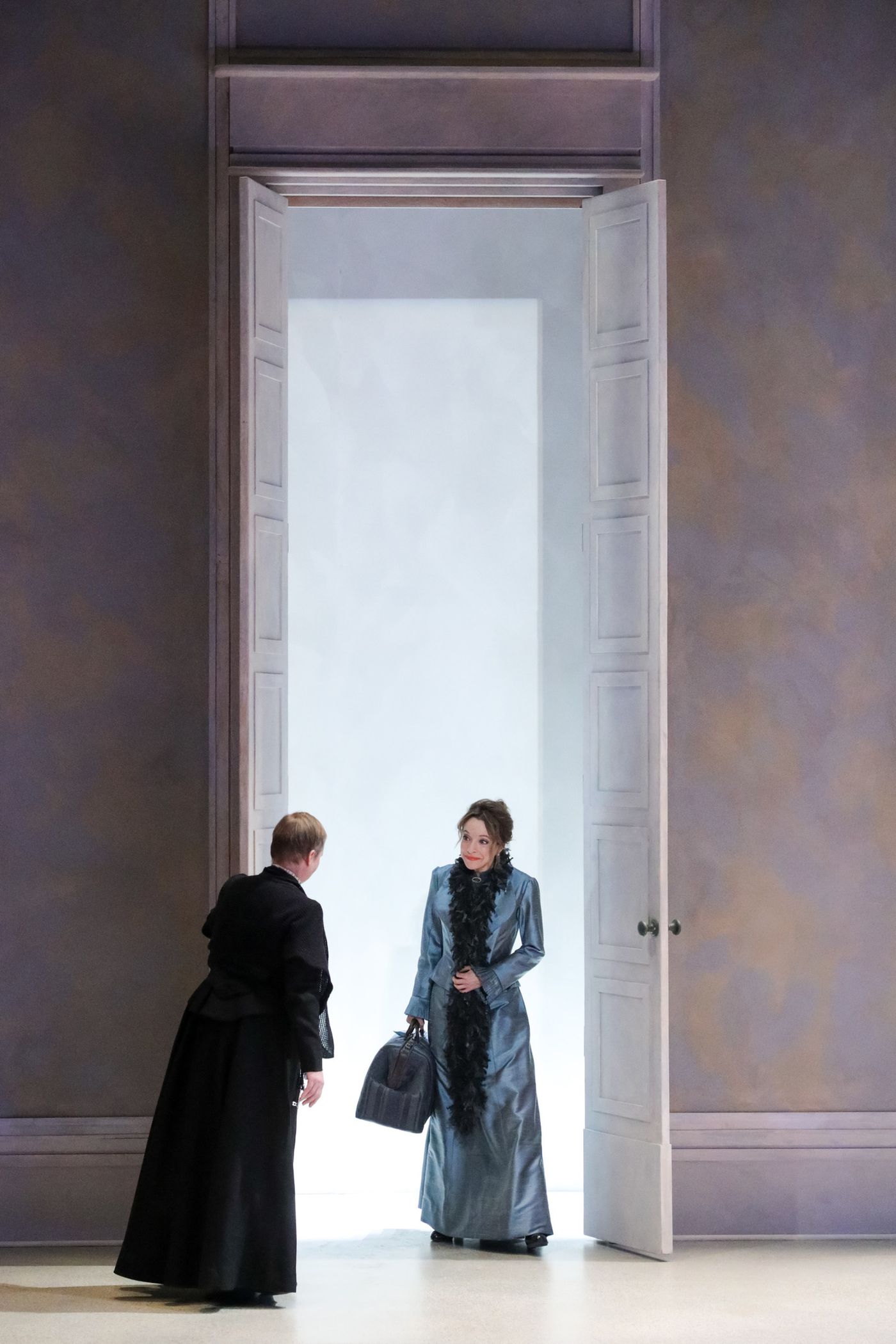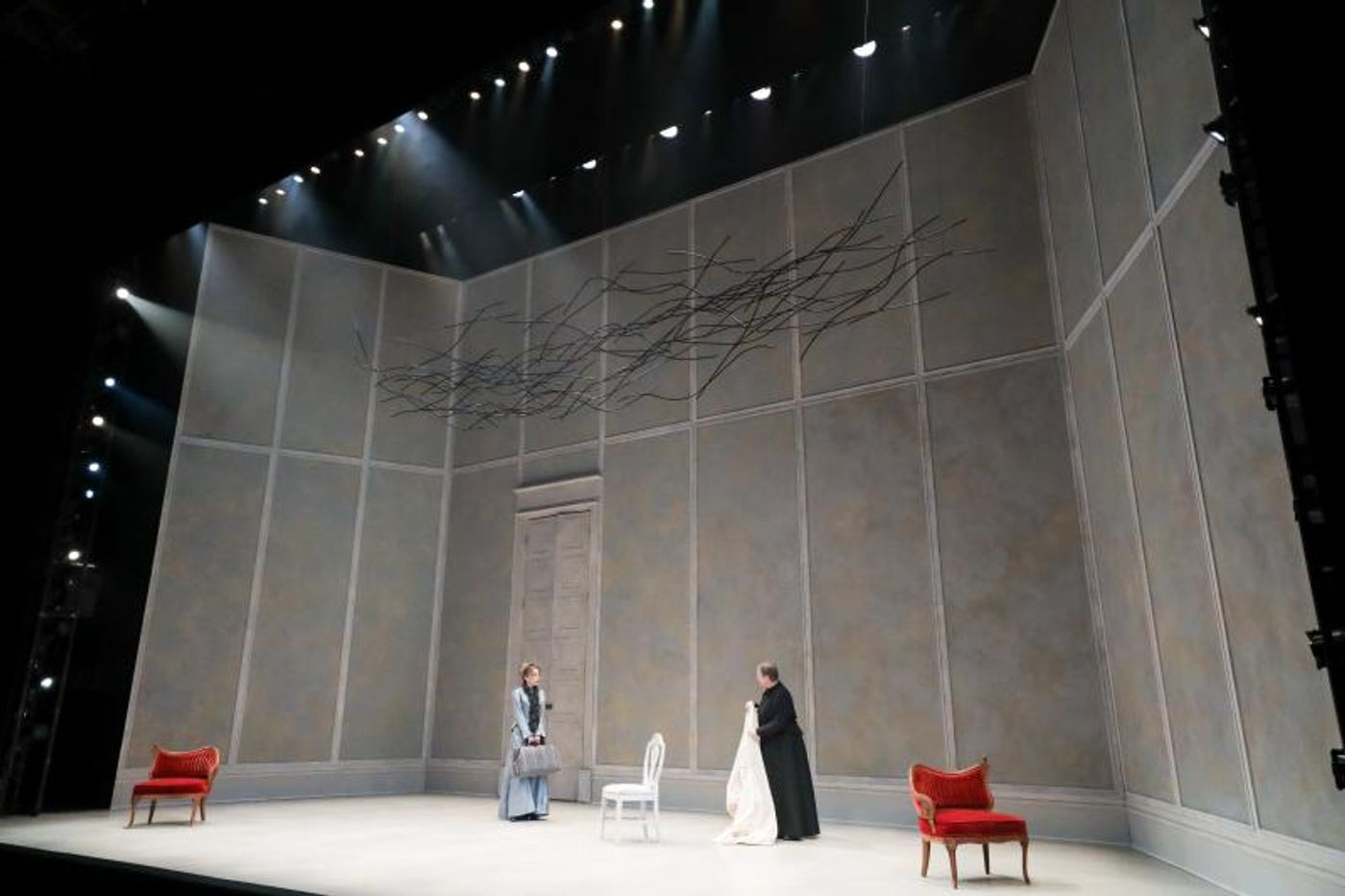Review: A DOLL'S HOUSE PART 2 at Mirvish
 Mirvish and Royal Manitoba Theatre Centre's production of A DOLL'S HOUSE PART 2 does for theatre what is usually reserved for blockbusters and novels - it provides a sequel, many years down the road, to one of Henrik Ibsen's more controversial works (A Doll's House). Written more than a hundred years after the original play's debut, Lucas Hnath has composed a script that investigates what Nora, the wife and mother who left her family, has been up to since her prompt departure. While the cast and creative team navigate the fine line between humour and solemnity the show requires well, there are moments where it seems like something's missing from the narrative.
Mirvish and Royal Manitoba Theatre Centre's production of A DOLL'S HOUSE PART 2 does for theatre what is usually reserved for blockbusters and novels - it provides a sequel, many years down the road, to one of Henrik Ibsen's more controversial works (A Doll's House). Written more than a hundred years after the original play's debut, Lucas Hnath has composed a script that investigates what Nora, the wife and mother who left her family, has been up to since her prompt departure. While the cast and creative team navigate the fine line between humour and solemnity the show requires well, there are moments where it seems like something's missing from the narrative.
The play kicks off with a knock at the same door Nora (Deborah Hay) exited through 15 years prior. She's met by her nanny Anne-Marie (Kate Hennig), and as the two reconnect small details about Nora's new life and Anne-Marie's added responsibilities begin to come to light. Hay brings a high-energy, and at some points frantic, Nora to life. She man-spreads all over the furniture and floor to make sure she takes up space in the barren home that she left, as a somewhat forward display of assertion.
Hennig portrays the elderly nanny wonderfully, balancing genuine love for Nora with sternness for her actions and ideas. The language of the play leans heavily on twenty-first century phrases, and Hennig ensures the sweet Anne-Marie drops modern curses as naturally as a woman in 2019 might. She's also the comedic underdog of the show against Hay, whose humour comes from facial expressions and sharp language. Rather, Hennig delivers highly dimensional black humour - in particular, her speech about how Nora's estranged husband Torvald should have a dog but doesn't have the heart to put it down once it grows old is highly entertaining and delivers a great deal of information on the absent man.
As the stoic Torvald (Paul Essiembre) whose inactivity over the last 15 years has placed everyone in a difficult situation, Essiembre is straightforward and simple. His actions and delivery contrasts nicely against Hay, and the two share a fantastic scene towards the end where both script and action combine for a genuine, insightful moment given their characters' difficult history. Once Nora meets her now-grown daughter Emmy (Bahareh Yaraghi) there are a few moments where the two reflect on the other two children, offering Nora a glance into their adult lives. Yaraghi plays a mature, resourceful, matter-of-fact Emmy who doesn't agree with her mother's feminist views but still attempts to help rectify the situation on her own terms.

The set design (Teresa Przybylski, also responsible for costumes) of this production is kept simple, with only a few chairs and Nora's travel bag on the large, sparse set. The towering door is a heavy-handed symbol of the power her departure had over the household. Lighting (Michael Walton) and sound (Michael Wright) are used to signify new chapters, characters, and scenes within the play and move the narrative along smoothly.
A DOLL'S HOUSE PART 2 is a technically and casting-wise solid piece of work. The script seems a bit predictable, especially in a post-#MeToo world. The women of the story are all strong figures with valid opinions and feelings, but at times the language feels a bit expected - there aren't any new concepts explored. Rather, Hnath takes a tongue-in-cheek approach to looking at women's rights which earn a few self-aware laughs but don't present any ground-breaking ideas.
When the original play debuted, Nora became a revolutionary figure for women, and while she is still considered such in her late 1800s setting there are a few missed opportunities in really highlighting the significance of her actions in this production.
A DOLL'S HOUSE PART 2 runs through April 14 at the CAA Theatre 651 Yonge St., Toronto, ON.
For more information or to purchase tickets, visit https://www.mirvish.com/shows/a-dolls-house-part-2
Main photo credit: Leif Norman
Reader Reviews
Videos

